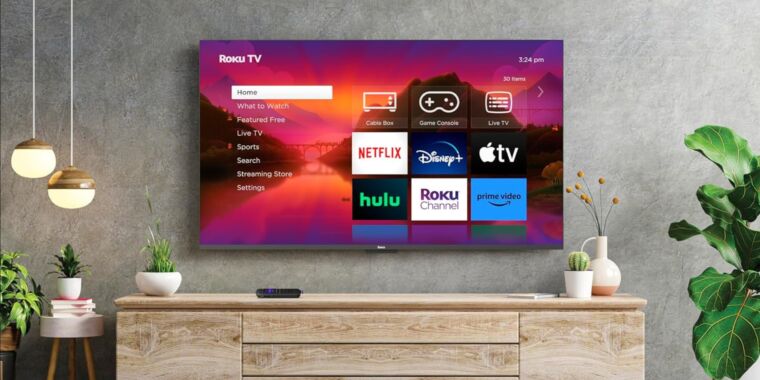A patent application from the company spotted by Lowpass describes a system for displaying ads over any device connected over HDMI, a list that could include cable boxes, game consoles, DVD or Blu-ray players, PCs, or even other video streaming devices. Roku filed for the patent in August 2023 and it was published in November 2023, though it hasn’t yet been granted.
The technology described would detect whether content was paused in multiple ways—if the video being displayed is static, if there’s no audio being played, if a pause symbol is shown anywhere on screen, or if (on a TV with HDMI-CEC enabled) a pause signal has been received from some passthrough remote control. The system would analyze the paused image and use metadata “to identify one or more objects” in the video frame, transmit that identification information to a network, and receive and display a “relevant ad” over top of whatever the paused content is.



I would assume that these ads still need an internet connection to play. Another great reason to use an external box to play your media and leave the smart TV offline.
*offline!
The whole point of having a Roku tv, however is for it to be connected to the internet and it works between all of the apps and your phone.
We have a 10 year old Roku TV and it’s actually been pretty great that’s streaming.
Actually the whole point of having a Roku TV is that it’s cheap. Unlike many other TV Os’ people don’t necessarily buy Roku TV’s on purpose. Roku has just cornered the market on providing cheap smart OS’ to the cheapest of TV manufacturers. Chiefly TCL, which became incredibly popular as a surprisingly good value TVs in the last five years. I’d imagine they did so by providing the OS for next to nothing to these manufacturers, with the intention to steal as much end user data to sell off as humanly possible.